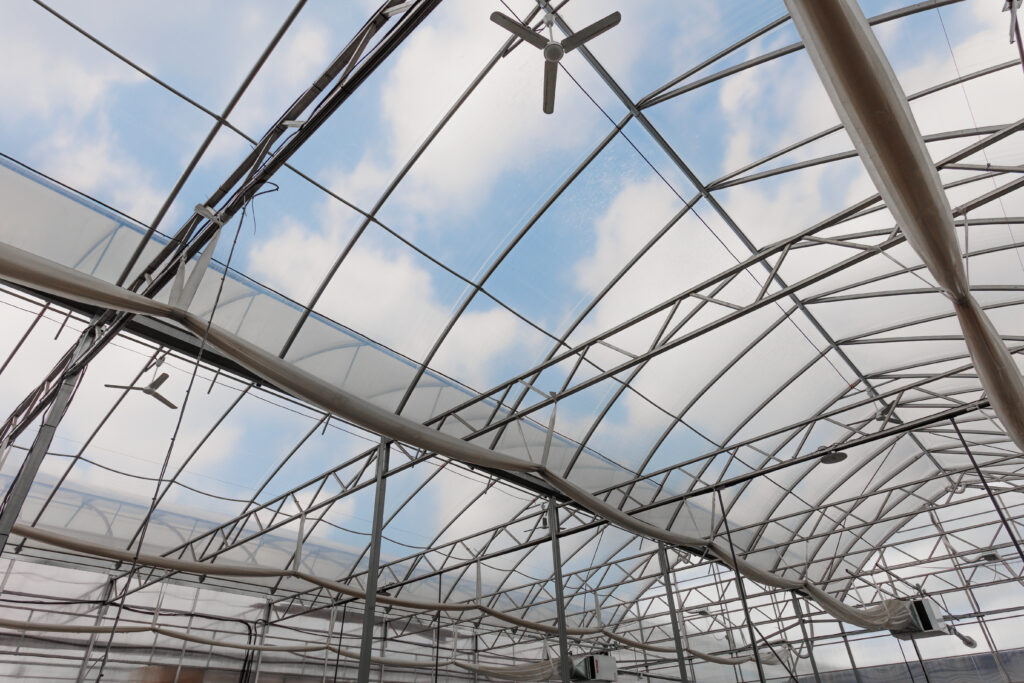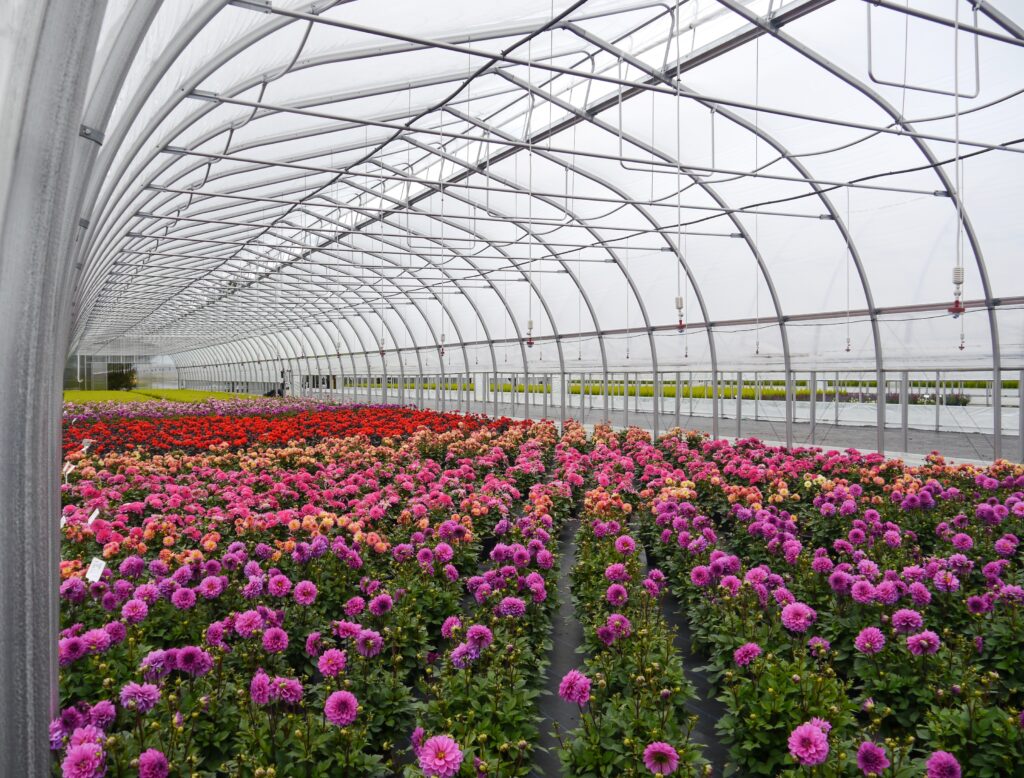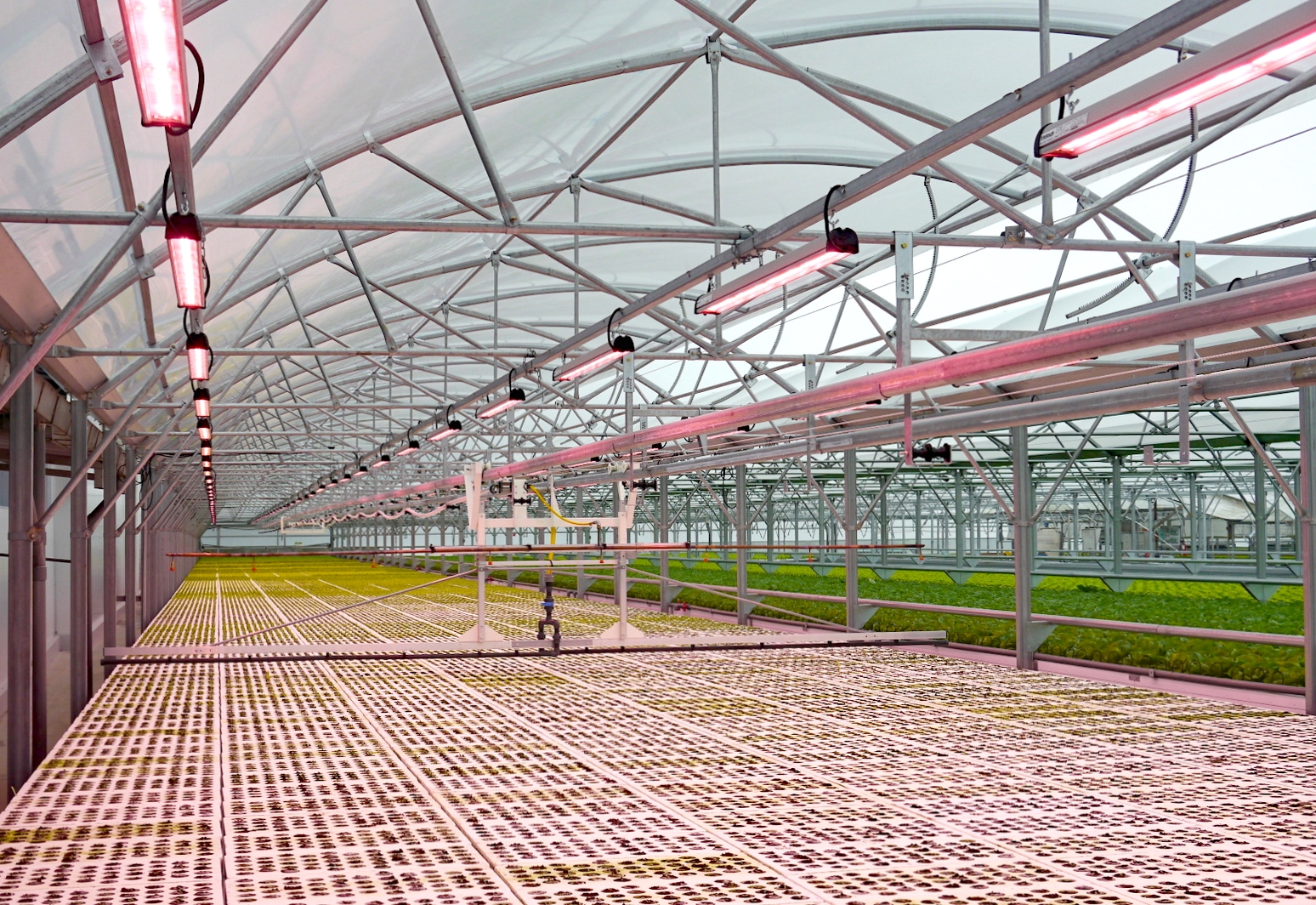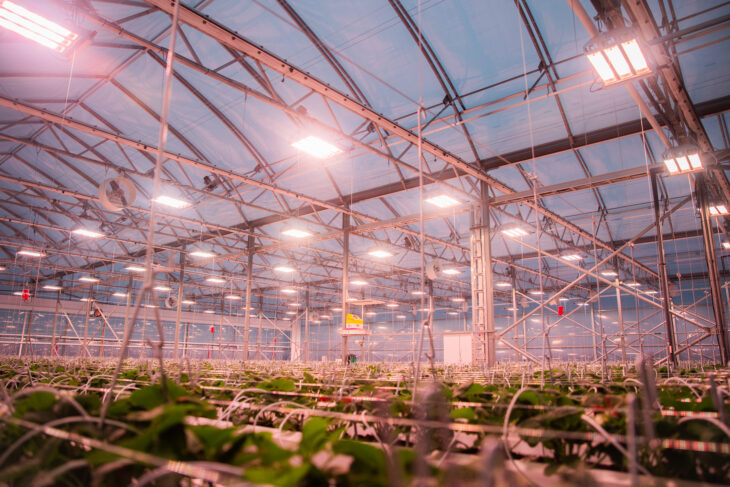This post is also available in: ![]() English
English ![]() Français (French)
Français (French)
Introduction
The buffer effect in a commercial greenhouse refers to the ability of the greenhouse environment to maintain stable and optimal growing conditions despite external fluctuations in temperature, humidity, or other environmental factors.
More air mass (volume!)
The volume of air inside the greenhouse directly affects its ability to buffer against external environmental fluctuations. A larger greenhouse with greater height and width typically contains more air mass, providing a greater thermal inertia. This means that it takes longer for the temperature inside the greenhouse to change in response to external temperature fluctuations, resulting in a more stable internal climate.
This reduce drastically extreme temperature and humidity shocks on crops in the greenhouse.

Fahrenheit version below:

Temperature Stratification
In taller greenhouses, temperature gradients may develop vertically, with warmer air accumulating near the top and cooler air settling near the bottom.
This temperature stratification can affect the buffer effect by influencing how quickly the greenhouse responds to changes in external temperatures. Proper design considerations, such as the installation of fans or ventilation systems, can help mitigate temperature differentials and improve the overall buffer effect.
The buffer effect role
This buffer effect is crucial for several reasons:
1. Temperature Regulation: Greenhouses use various mechanisms such as ventilation, heating, and cooling systems to control the internal temperature. The buffer effect helps to mitigate sudden temperature changes, preventing stress to plants that could lead to reduced growth or crop damage.
2. Humidity Control: Maintaining the right humidity levels is essential for plant growth and health. The buffer effect helps to stabilize humidity levels inside the greenhouse, preventing fluctuations that could lead to issues like mold, mildew, or plant diseases.
3. Protection from External Factors: External factors such as strong winds, heavy rain, or extreme temperatures can adversely affect plant growth. The buffer effect provides a protective barrier against these external elements, shielding plants and maintaining a stable microclimate conducive to growth.
4. Consistent Crop Production: By minimizing fluctuations in environmental conditions, the buffer effect enables more consistent and predictable crop production throughout the year. This consistency is essential for meeting market demands and maximizing profitability in commercial greenhouse operations.
5. Energy Efficiency: A greenhouse with a strong buffer effect requires less energy input for maintaining optimal growing conditions. This efficiency translates into cost savings for greenhouse operators and reduces the environmental footprint associated with greenhouse operations. What is more, the combination with a thermal/shading system is key to keep optimal growing conditions throughout the year.

Fahrenheit version below:

Conclusion
Overall, the buffer effect plays a vital role in ensuring the success and sustainability of commercial greenhouse operations by providing a stable and conducive environment for plant growth, optimizing production, and minimizing the risks associated with external environmental fluctuations.









[…] What is the importance of the buffer effect in a commercial greenhouse ? https://horti-generation.com/buffer-effect-volume-impact-climate-control-commercial-greenhouse/ […]